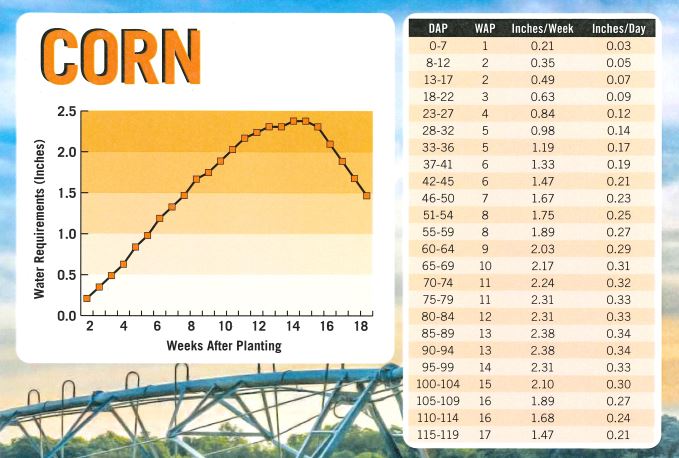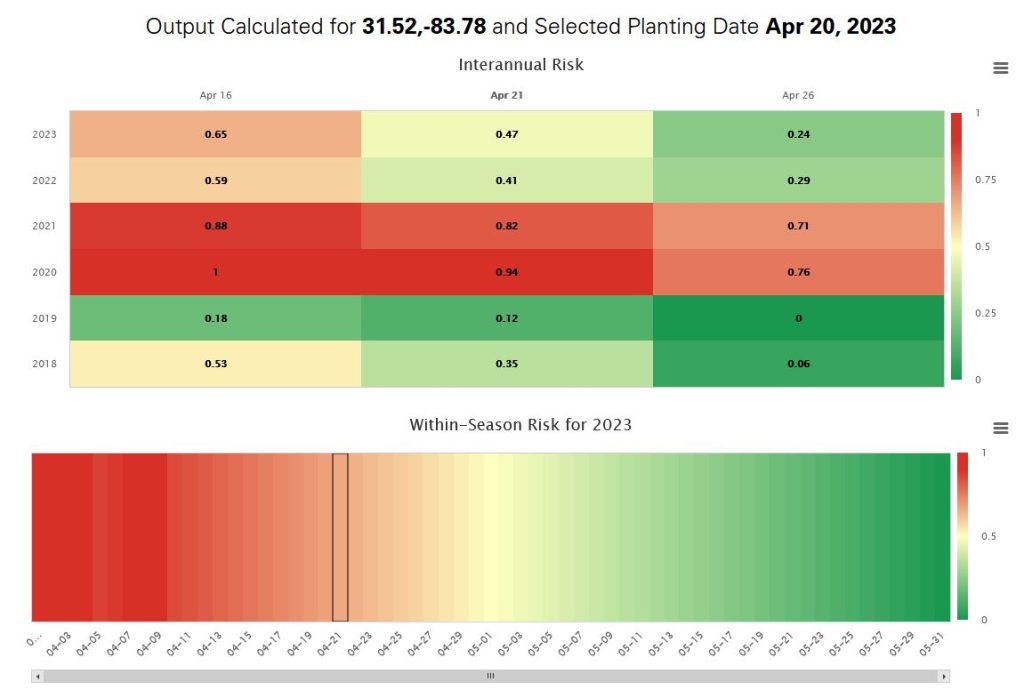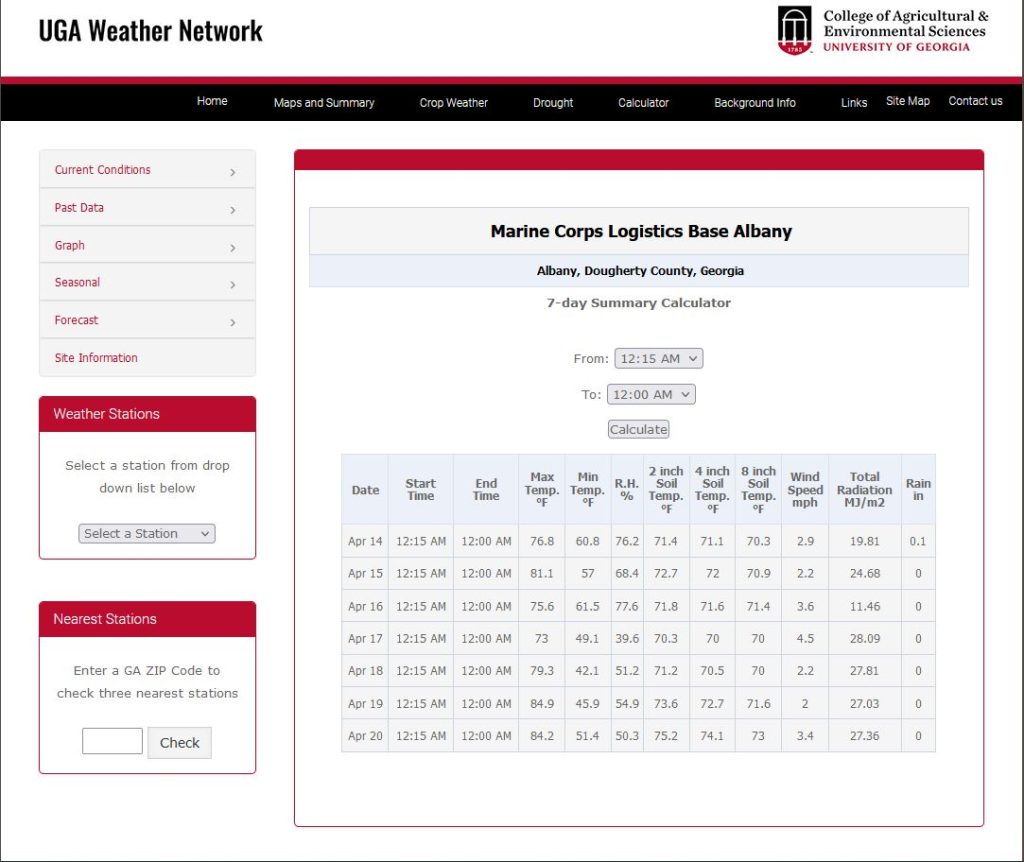CORN
Much of the field corn is planted and on its way. As it progresses, irrigation scheduling will help in maximizing growth and yield. Following is the water use graph and a weekly use chart to assist in determining the crop needs. Scheduling methods can vary from farm to farm, but it is important to have a plan. Calendar method, checkbook method, using soil moisture sensors, and even irrigation scheduling programs or phone apps are available for individuals. Choose the method that works best for your farm, and if you would like more information about irrigation scheduling, contact your county agent.

COTTON AND PEANUTS
Planting time is upon us. We have been seeing some planting activity this week in the county. Following are some things to consider as we are entering the planting windows for cotton and peanuts. Some of the risks in the early portion of our planting season are thrips (insect) pressure and soil temperature for these crops.
Thrips Pressure Risk/Peanut Rx
North Carolina State has a Thrips Infestation Predictor model that provides very useful information for growers to assess risk of thrips infestation. The Thrips Infestation Predictor for Cotton can help an individual see the risk for a specific location on a specific date. Below is an example of a location in Worth County for planting on April 21, 2023. The color scale ranges from dark red to dark green, with shades of red showing higher risk and shades of green showing lower risk. Check out the link to look at your field. While this predictor is designed for cotton, it could also be a useful tool for predicting risk to peanuts.

Those that have attended any peanut or crop disease meeting in recent years have heard from Dr. Bob Kemerait about the importance of knowing risks in peanut production. The Peanut Rx is a risk management tool for peanut growers. Take a look at the various programs in the documents below or visit the website for an interactive version: https://peanutrx.org/
Soil Temperature for Planting
Soil temperature is an important consideration for early planting. The UGA Weather Network is a system of weather stations in locations across the state. There are many stations that surround Worth County, that can be used for information – some include Albany, Camilla, Moultrie, Ty Ty, and Arabi. Select the weather station that is nearest the farm location, or view a few to see the trends.
Below is a snapshot of the Albany station for today. It shows weather and soil conditions for the last 7 days. The 4-inch soil temperature is an indicator of planting conditions for cotton and peanuts.

For cotton, generally, planting can safely proceed when the 4-inch soil temperatures reach 65 degrees F for 3 days and warming conditions are projected over the next several days (or approximately 50 DD-60’s within 5 days of planting). Experience suggests that this is a very safe, conservative approach. For optimal emergence, soil temperatures should be 65 degrees F or more during the first 2 to 3 days after planting into moist soil, as imbibed seed are often killed by temperatures of 41 degrees F or below. Cotton seeds and seedlings are most sensitive to cool or cold temperatures during this time frame. Warm temperatures should also be likely within 5 days of planting, as temperatures below 50 degrees F can cause chilling injury to emerging seedlings.
For peanuts, the soil temperature at the 4-inch depth needs to be greater than 68 degrees F for 3 consecutive days without risk of a cold front after planting.
Hopefully these pointers will assist you in making your early planting decisions.
If we can be of assistance at Worth County Extension, please let us know.